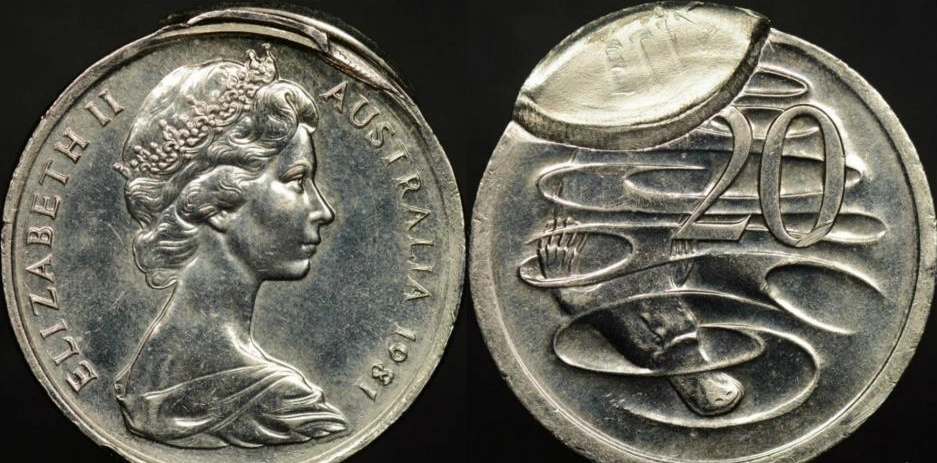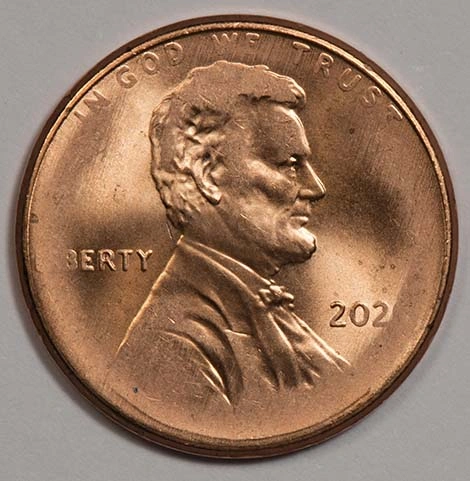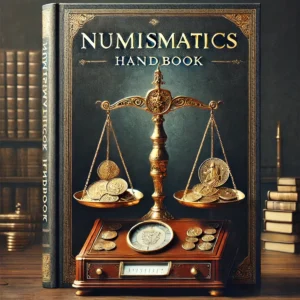Modern Coin Errors: Hidden Gems in US Numismatics
Modern U.S. coin errors are proof that you don’t need to dig through ancient collections to find treasures. In fact, some of the most valuable mistakes are sitting in pocket change right now — if you know what to look for.

From dramatic off-center strikes to rare wrong-planchet mules, today’s minting process still occasionally produces collectible blunders. With sharp eyes and a little knowledge, modern coin errors offer collectors an exciting blend of affordability, discovery, and serious upside potential.
📘 Download the full guide: The Numismatics Handbook — A +135-page expert resource on U.S. coin collecting.
Why Modern Coin Errors Matter
While legendary mistakes like the 1955 Doubled Die Lincoln Cent and 1937-D 3-Legged Buffalo Nickel dominate auction headlines, the story of mint errors didn’t stop decades ago — it’s still unfolding.
Thanks to massive mint output, new technological challenges, and occasional lapses in quality control, modern coin errors have carved out a vibrant niche in U.S. numismatics. Collectors who once focused only on pre-1964 silver or vintage coinage now eagerly hunt for modern mistakes.
Modern error coins matter because:
- They’re still findable in everyday circulation — even today
- They offer low-cost entry for new and younger collectors
- Many are already reaching strong premiums in auctions
- They reflect new chapters in the ongoing story of the U.S. Mint

Whether it’s a State Quarter with an extra leaf, a Sacagawea dollar struck on a quarter blank, or a Presidential dollar missing its edge lettering, modern coin errors prove that the hunt for valuable rarities is very much alive.
In short: numismatic treasures aren’t only buried in history — they’re still being minted.
Types of Modern Coin Errors
Recognizing the different types of modern errors is the first step to finding and valuing these exciting coins. Here are the major types you should know:
Off-Center Strikes
When a coin is struck outside the center of the die, part of the design is missing. Modern off-centers showing 50% or more blank planchet (especially with a full visible date) are highly desirable.
Missing Clad Layer
Coins like quarters, dimes, and dollars missing the outer nickel layer show a bright copper core — often lighter in weight and dramatically different in appearance.
Strike-Through Errors
Struck through debris like grease, wire, or even cloth fibers during minting, these errors create smeared or unusual surface textures.
Wrong Planchet Strikes
Modern wrong planchet examples include Sacagawea dollars struck on quarter blanks or nickels struck on penny planchets. These freak combinations are rare and valuable.
Die Clashes and Cud Breaks
When dies strike each other without a planchet between them, faint “ghost images” transfer onto the dies, leading to dramatic clash marks. Cuds are chunks of missing design where a die break occurred.
✅ Visibility, severity, and clear attribution strongly impact the value of any modern error.

Most Valuable Modern Coin Errors (Examples)
| Error Type | Famous Example | Est. Value Range |
|---|---|---|
| Off-Center Strike | 2000 Sacagawea Dollar (60% Off-Center) | $250–$500+ |
| Missing Clad Layer | 2007 Washington Dollar (Missing Edge Lettering + Missing Layer) | $800–$2,000 |
| Mule Error | 2000 Sacagawea/Quarter Mule | $100,000+ |
| Doubled Die Reverse | 2004-D Wisconsin Quarter (“Extra Leaf” High/Low) | $50–$500 |
| Strike-Through Error | Modern Quarters with Major Grease Strikes | $75–$400 |
✅ Rarity, dramatic appearance, and certified grade are key drivers of final prices.
Modern Coin Errors vs Classic Coin Errors
| Aspect | Modern Errors (2000–Today) | Classic Errors (Pre-2000) |
|---|---|---|
| Discovery Source | Bank rolls, fresh circulation | Auctions, estate collections |
| Typical Value Range | $50–$2,000+ | $500–$100,000+ |
| Famous Examples | Sacagawea/Quarter Mule, Wisconsin Extra Leaf | 1955 Doubled Die Lincoln, 3-Legged Buffalo |
| Rarity Level | Growing | Established |
| Collector Demand | Rising among specialists | Very strong across numismatics |
Tip: Modern errors remain underappreciated compared to their vintage counterparts, making today an excellent time to build a specialized error collection.
How to Spot Modern Coin Errors
To spot valuable modern errors:
- Use a 10x–20x magnifying loupe for detailed inspection
- Check the date, mint mark, rims, and central devices for anomalies
- Look for missing design elements, doubled lettering, unusual colors, or off-centered strikes
- Weigh suspicious coins to spot wrong planchet errors
- Reference trusted guides and certified examples from PCGS, NGC, or official Mint releases
When you suspect a significant error, certification by PCGS or NGC is essential for maximizing resale value.
How to Sell Modern Coin Errors
- eBay & GreatCollections: Ideal for mid-range certified errors
- Heritage Auctions: Best for headline-grabbing mules and six-figure rarities
- Local Dealers: Fast cash sales for lower-value finds
- Coin Shows: A great place to meet error specialists face-to-face
🛑 Never clean your coins. Cleaning destroys value and collector demand.

FAQ About Modern U.S. Coin Errors
What are modern coin errors?
Modern coin errors are mistakes that occur during the minting process on U.S. coins produced from around 2000 to today. They include off-center strikes, missing clad layers, strike-throughs, wrong planchet errors, and die clashes. These mistakes can turn ordinary coins into valuable collectibles.
Are modern coin errors valuable?
Yes, modern coin errors can be quite valuable. Some off-center strikes, missing clad layers, and wrong planchet errors can sell for $100 to $2,000 or more. Rare finds like the Sacagawea dollar mule error have reached prices over $100,000 at auction.
How do I find modern coin errors?
To find modern coin errors, check your pocket change, bank rolls, or freshly issued U.S. Mint products. Use a 10x magnifying loupe to inspect dates, rims, mint marks, and lettering for anomalies such as doubling, missing designs, or strike irregularities.
What is the most valuable modern U.S. coin error?
The most valuable modern U.S. coin error is the 2000 Sacagawea dollar struck with a Washington quarter obverse, known as the mule error. Examples have sold for over $100,000 at public auction due to their extreme rarity and collector demand.
Can I still find coin errors in circulation today?
Yes, modern coin errors still appear in circulation today. Bank rolls, change from cash transactions, and coin-operated machines often release coins with striking mistakes that went unnoticed during minting. Careful examination can reveal hidden treasures.
Should I have modern coin errors graded?
Yes, professional grading and authentication by PCGS or NGC significantly increase the credibility and value of modern coin errors. Certified error coins typically sell for much higher premiums compared to raw, uncertified examples.
What is a missing clad layer error?
A missing clad layer error occurs when a modern coin, usually a quarter or dollar, is struck without its outer nickel layer. The missing layer exposes the copper core, creating a distinct appearance and often reducing the coin’s weight. These errors are rare and collectible.
How much is a 2004-D Wisconsin Extra Leaf quarter worth?
A 2004-D Wisconsin Extra Leaf quarter with the “High Leaf” or “Low Leaf” variation typically sells for $50 to $500 depending on its grade and the sharpness of the extra leaf detail. These are among the most popular modern doubled die errors.
What is a strike-through error on a coin?
A strike-through error happens when foreign material like grease, wire, or debris is present between the coin blank and the die during striking. This causes missing or distorted design elements on the coin. Major strike-through errors can be quite valuable.
Where is the best place to sell modern coin errors?
The best places to sell modern coin errors are major auction houses like Heritage Auctions for high-value pieces, or online marketplaces like eBay and GreatCollections for mid-range certified errors. Local coin shows and reputable dealers also offer selling opportunities for faster transactions.
